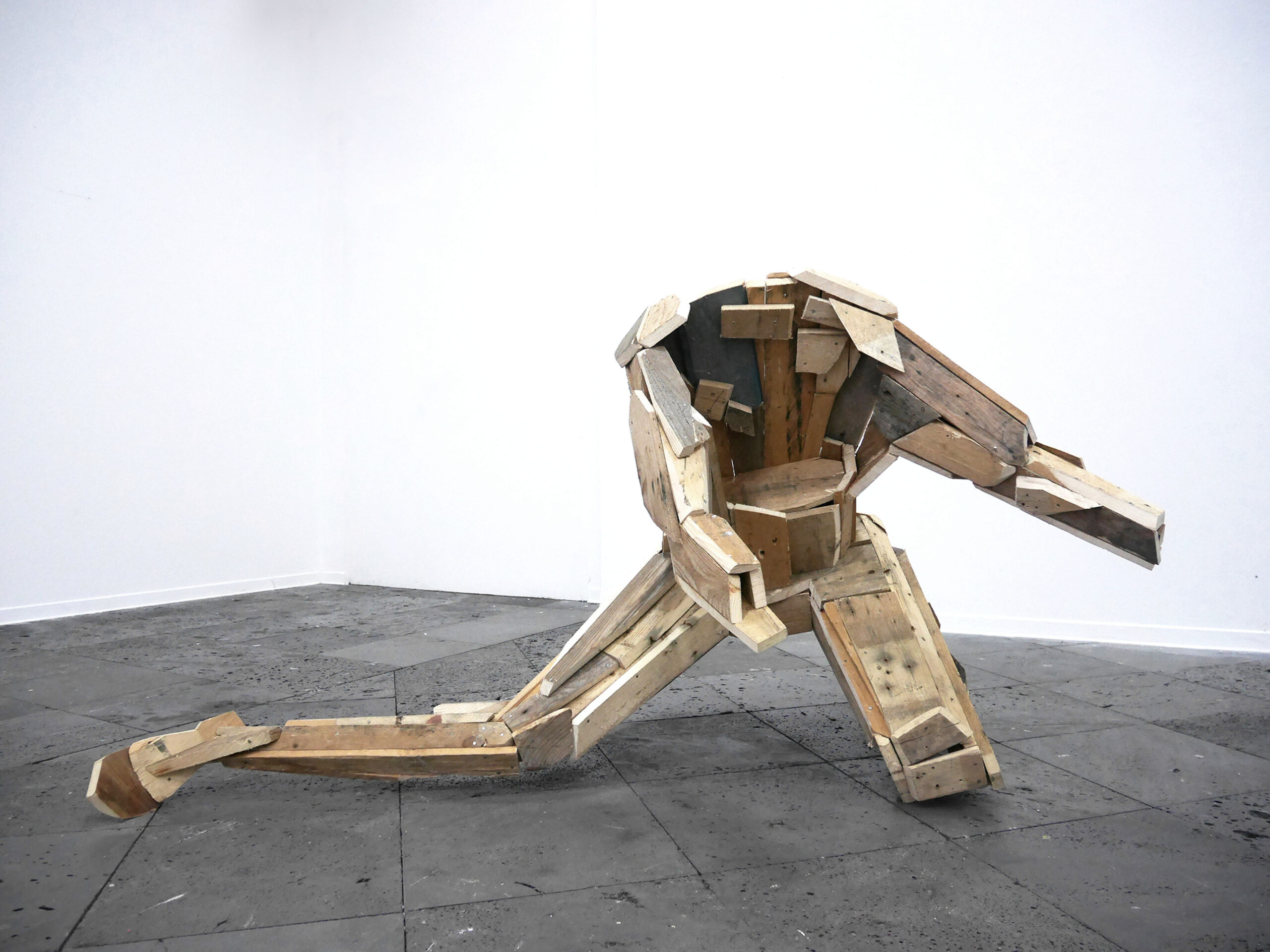Sculptures monumentales
Les Etreintes
Les étreintes est tout autant poétique que politique. C’est une histoire qui se raconte. Une histoire qui se répète, qui se rejoue, comme une chapelle que l’on visite à nouveau, une prière. Elle nous raconte autant la tendresse et l’amour, la liberté et la tolérance, que l’insupportable vie et sa violence. Elle ne se limite pas aux corps représentés car ces deux hommes ne sont que les représentants d’une communauté, d’une humanité qui lutte pour sa liberté.
Réalisée dans le cadre de Jardin des Arts 2025, pour la ville de Châteaubourg, dans le cadre d’une résidence de création de cinq mois .
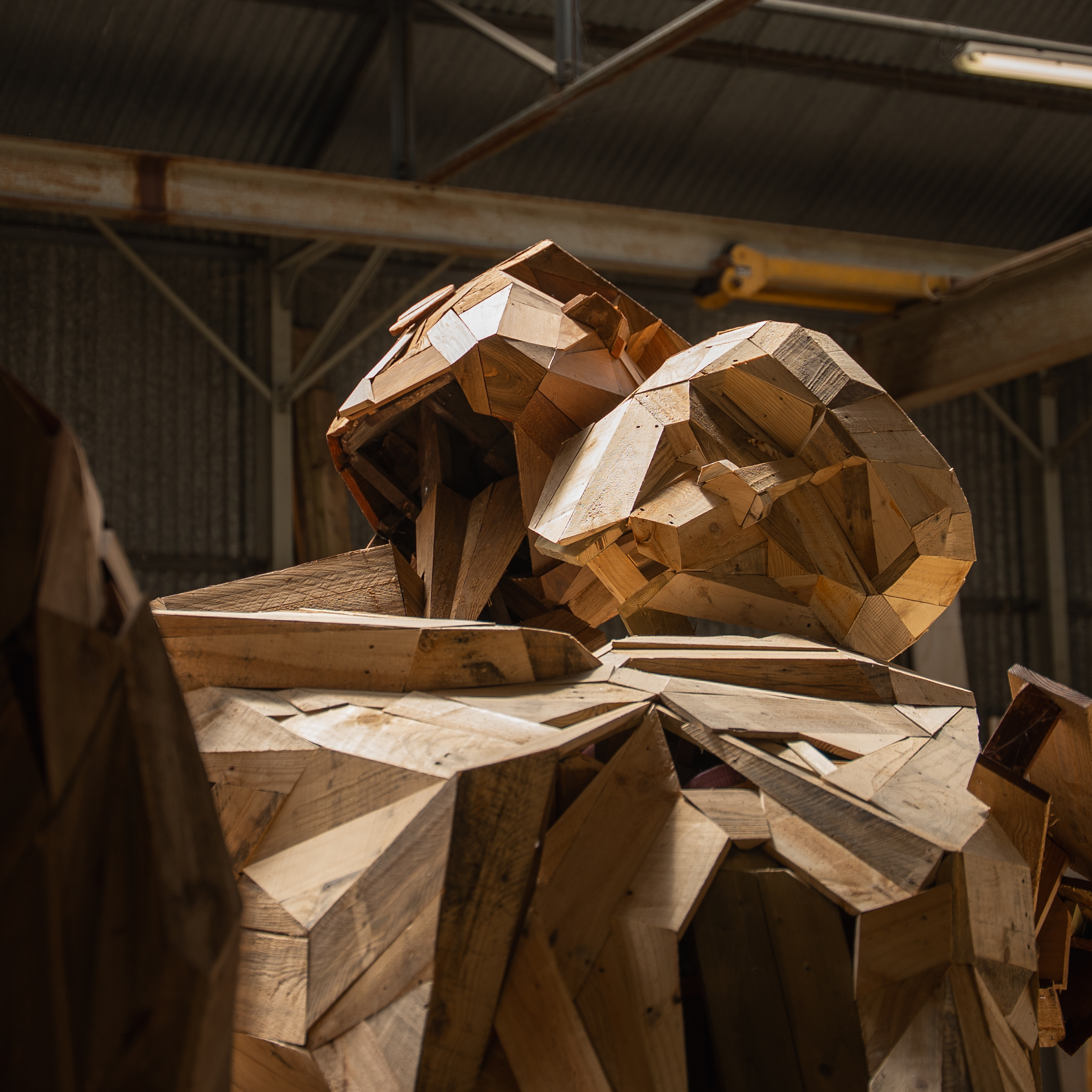
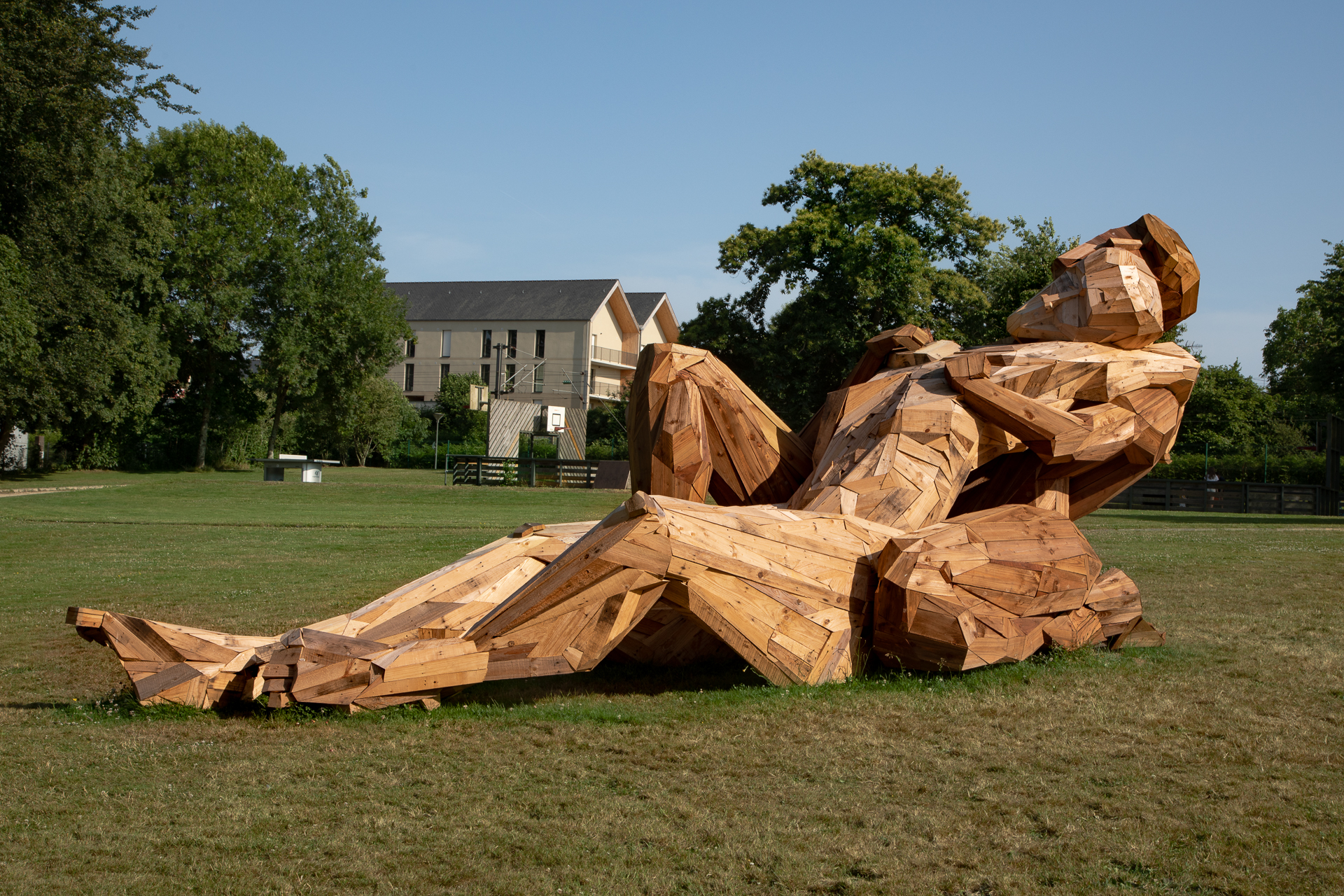
Ali
I discovered pallet wood and something seemed obvious to me: the salvaged material, this poor wood with a patina, calibrated, soft, and the idea that bodies rounded by muscles could just as easily be represented in an angular, stiff way, while seeking to provoke the same idea, the same sexual desire, at least intimate. This wood is a poor wood, but it has a history: it has traveled.
Designed for the Galerie du TEAT ChamFleuri in Saint Denis, the sculpture “Ali” was also exhibited at the Correspondances exhibition organized by La Friche, Service Artistique, in April 2018, in La Port, and then on the water mirror at the Musée Stella Matutina in Saint Leu.

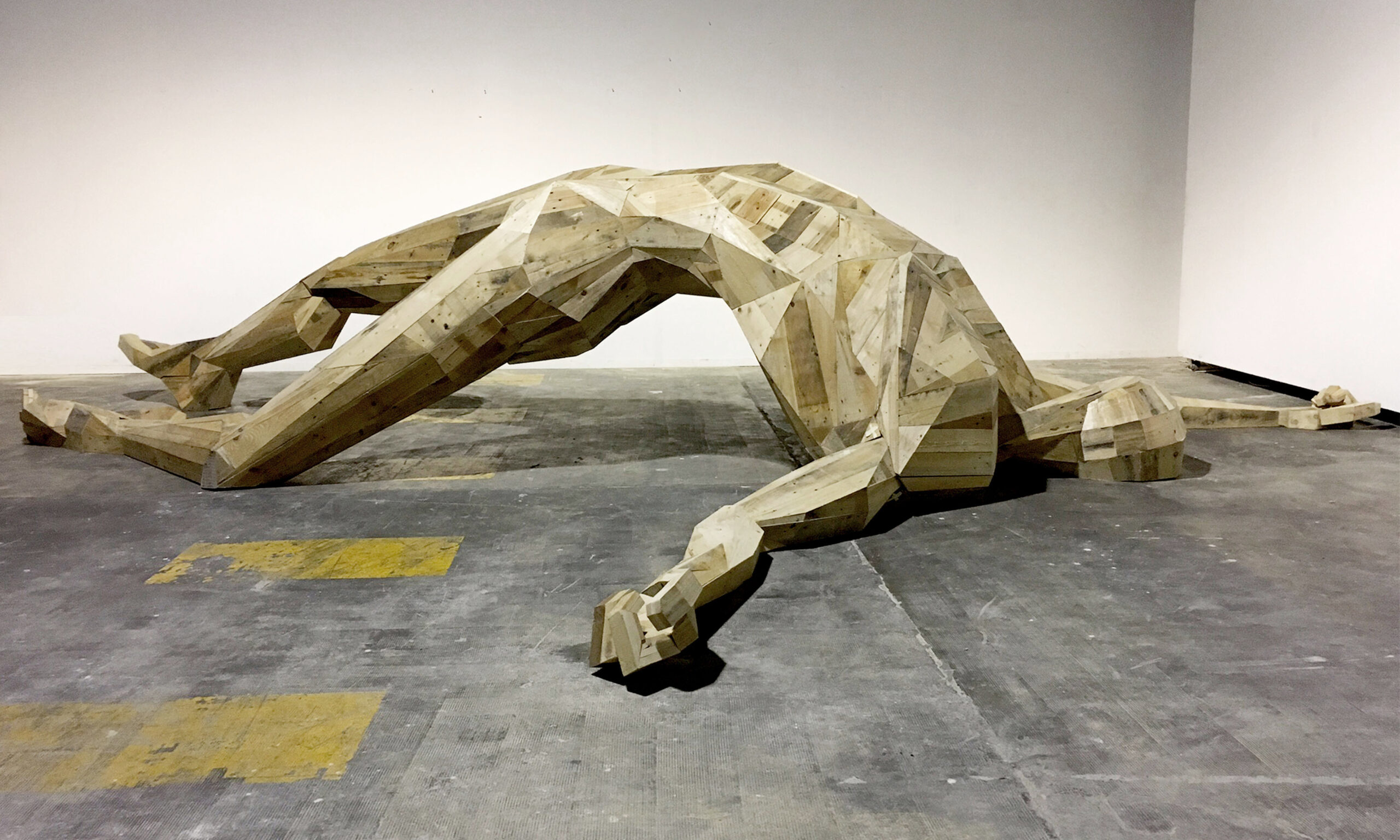
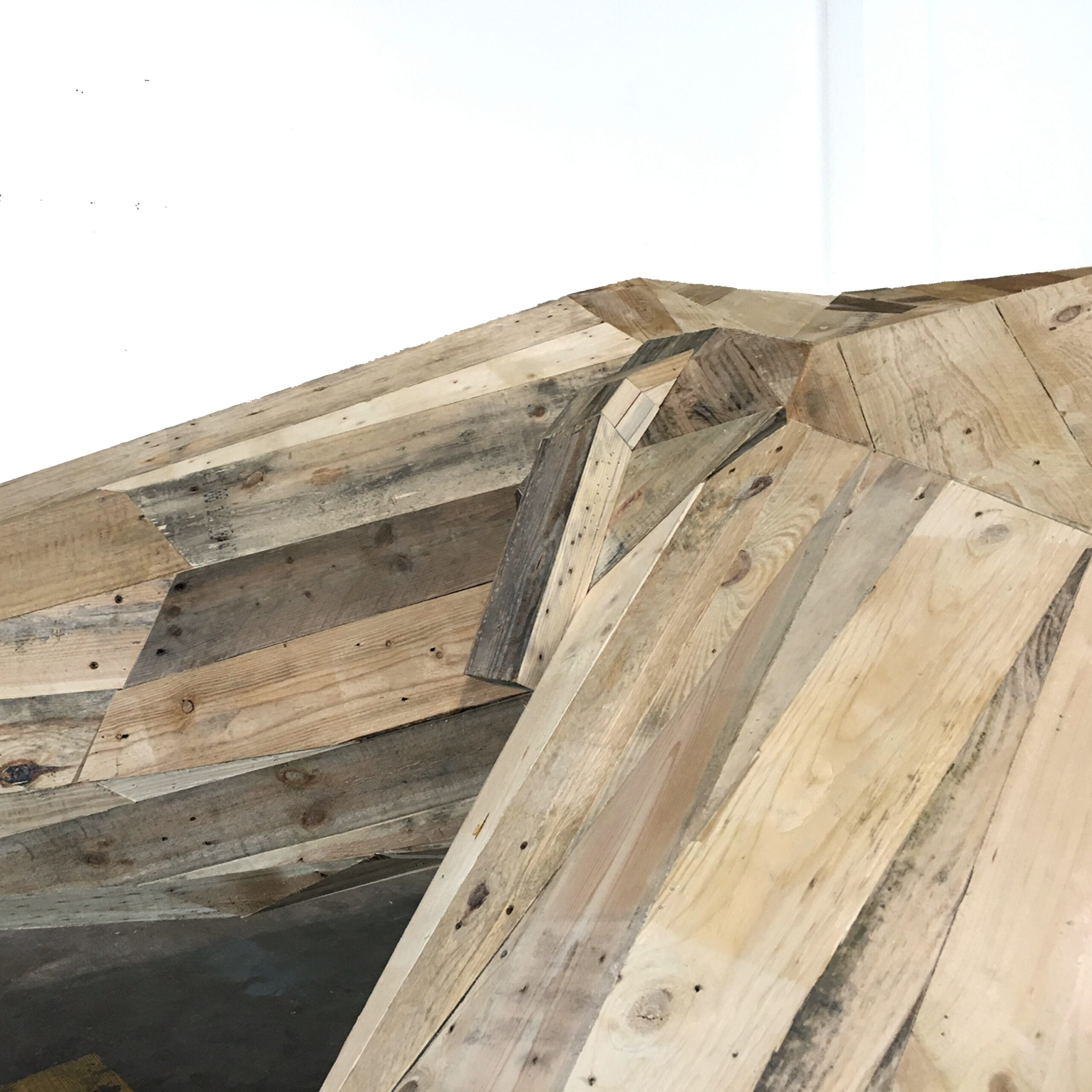

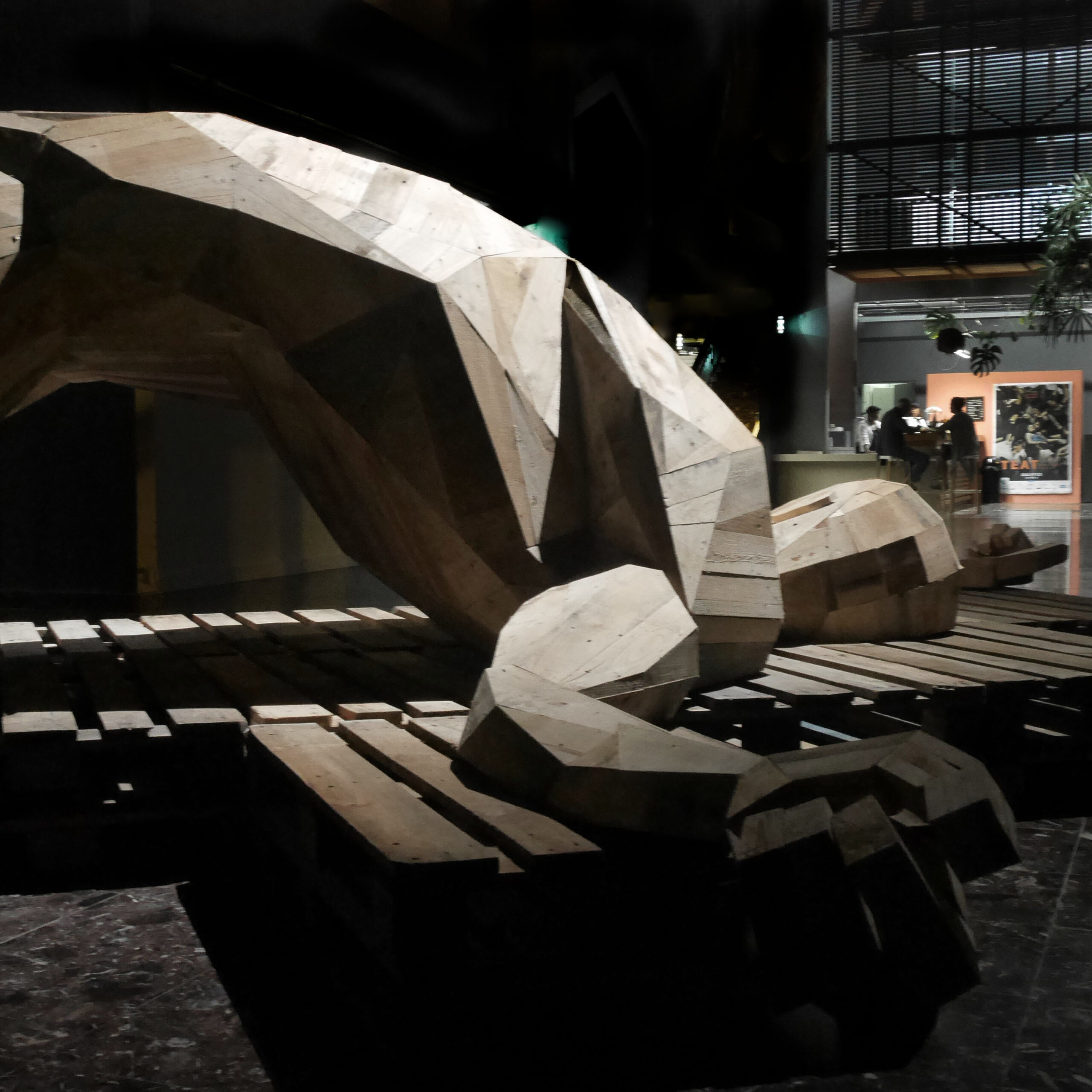

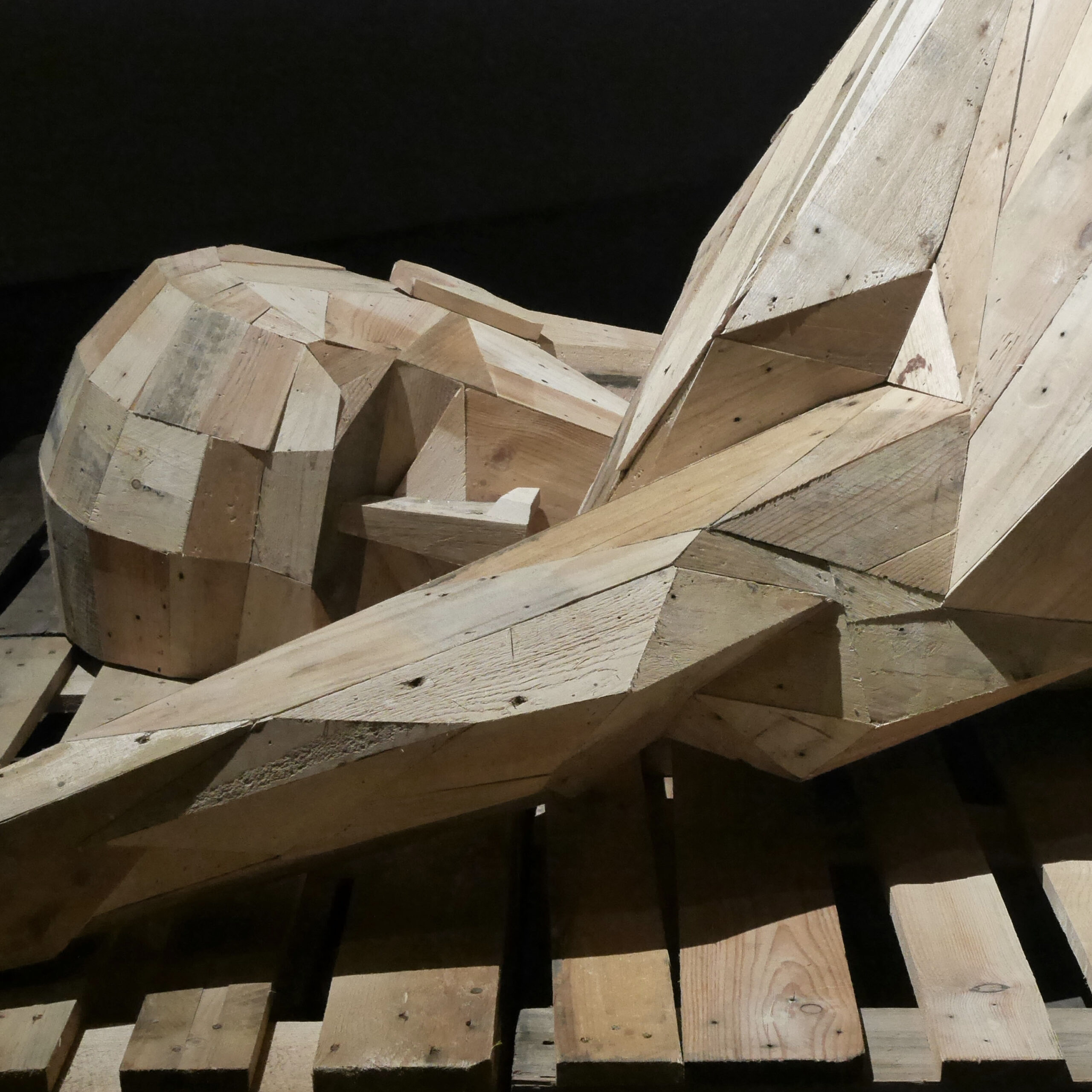
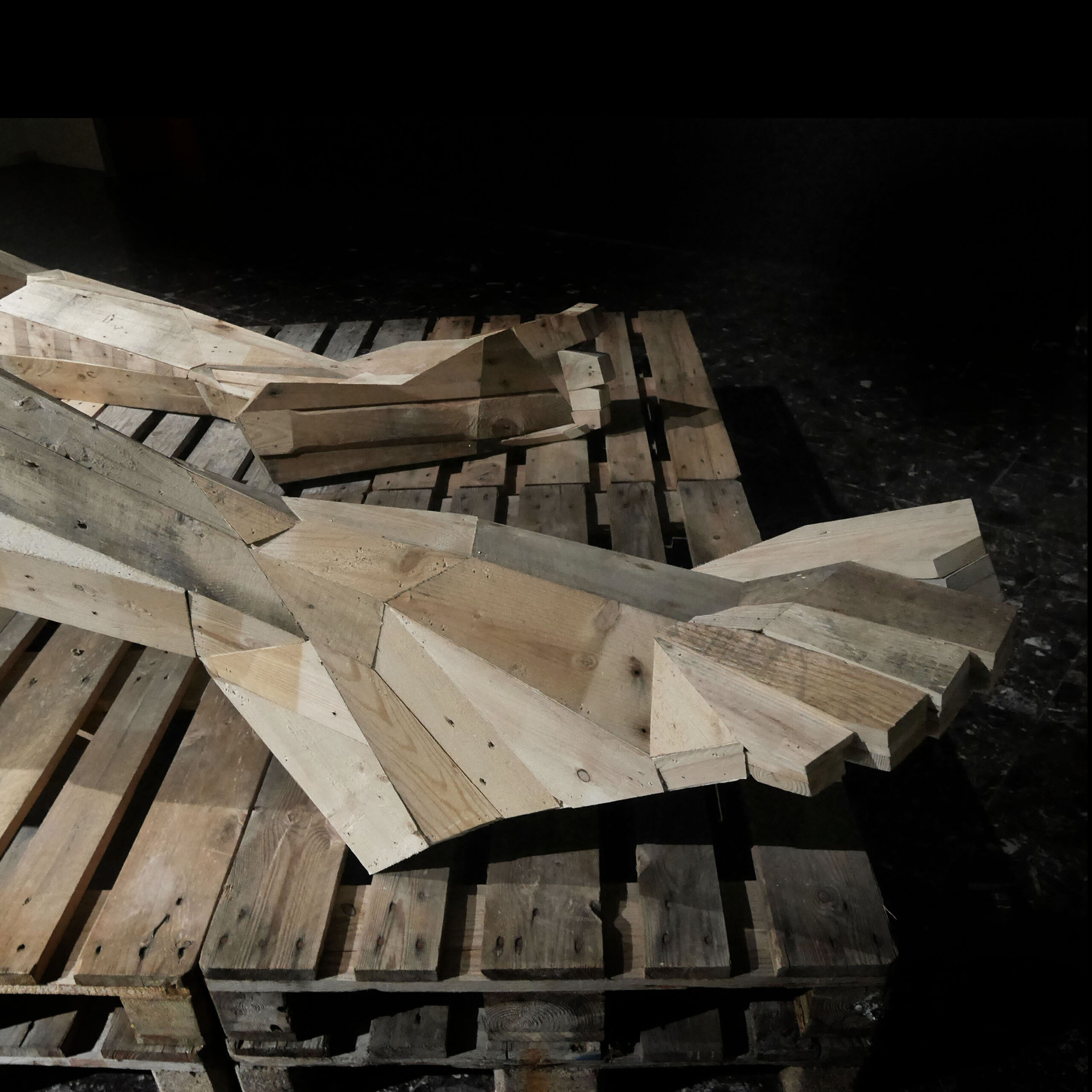
Sculpting the unspeakable,
Aude-Emmanuelle Hoareau, philosopher (1978-2017)
How do you tell a tragic, complex story in a single figure? How do you contain the power of desire and the fabric of a human life in matter? Samuel Perche responds to these challenges with a sculpture that presents a man lying on his back, leg bent, inspired by a photograph of a migrant who died at sea, taken by Aris Messinis.
For philosopher Giorgio Agamben, the legendary Greek statues that break their shackles to begin moving break a “ligatio”, a paralyzing power that is at work in every image. They give back to the image the freedom of gesture. As here, the image is that of a movement of the whole body, which arches its back and offers itself to the infinity of the sky, between ecstasy and imminent, almost certain or already-occurred death. We are dealing with a gesture in the broadest sense of the word, with the intention of a movement that cannot be enclosed. The wooden man is too large to be entirely consumed by the sculptor's creative appetite or devoured by the public eye. With its scale and ancient inspiration, it leads us to look beyond, to Greek myths, towards an epic destiny with which today's refugees merge, taking to the sea to fulfill their destiny and often ending up as martyrs of the waves.
The wooden man.
Pallet wood lacks the nobility of the marble used in Renaissance sculpture. These sculptures manifested an ideal order, an eternity of forms and ideas. On the other hand, the pallet reminds us of our current existence, of life in its ephemeral and precarious character, and of the idea that we fight to survive by reappropriating fallen materials.
Through the wooden planks, an intermediate material takes shape. Structured like a skeleton, but as smooth and soft as an envelope of skin, the wood in the sculpture synthesizes the impossible alliance of bone and flesh. Variations in color imitate the jolts of life. An impression of roundness pervades the whole, which is nevertheless made up of angles and flat, rectangular shapes. It's an artist's challenge to capture a symphony in a material (pallet wood) that resists and cannot be shaped, a symphony that can be assembled into curves, tending towards sensuality. The intelligence of shapes and curves is then deployed elsewhere, in the interstices, the points of contact of these assemblages, where elements converge and detach to enter into new arrangements, where gesture gives birth to movement. The artist places himself behind what can be seen to offer us the impression of life. Or rather, his interpretation of existence. He shares with us an intuition of movement, of intense, ecstatic existence, the conception of a body unified in a single gesture.
Forming a body
The feat of strength of this work is to construct desire as something thick, diffusing itself as it goes along, and requiring a whole series of gestures on the part of the artist. The sculptor performs several actions: boning, carrying, placing, nailing, balancing... in a demiurgic posture. He imparts to the wood the traces of his efforts, while letting the material live. His whole body is involved in the work, giving consistency to the sculpture. And his gestures come together in the coherence of the whole. The rigidity of the wood, the curves and twists suggested, say many things in a single movement and in a single form: the story of a man, his crossing of the ocean, the fate of the migrants stranded on the beach or, by extension, the tragic end of man who desires the world and bows before the sky, as if to implore its power. Let's think of this sculpture as a breath that gives life to shapes and curves. Through this breath, the sculptor becomes one with his work. The wooden man feeds off his expectations and desires, and together they combine psychic energy and physical strength. The drama is exorcised in a meaningful form: the man's body, facing the sky, in a position of enjoyment and despair, a tribute to the hope of a better life.
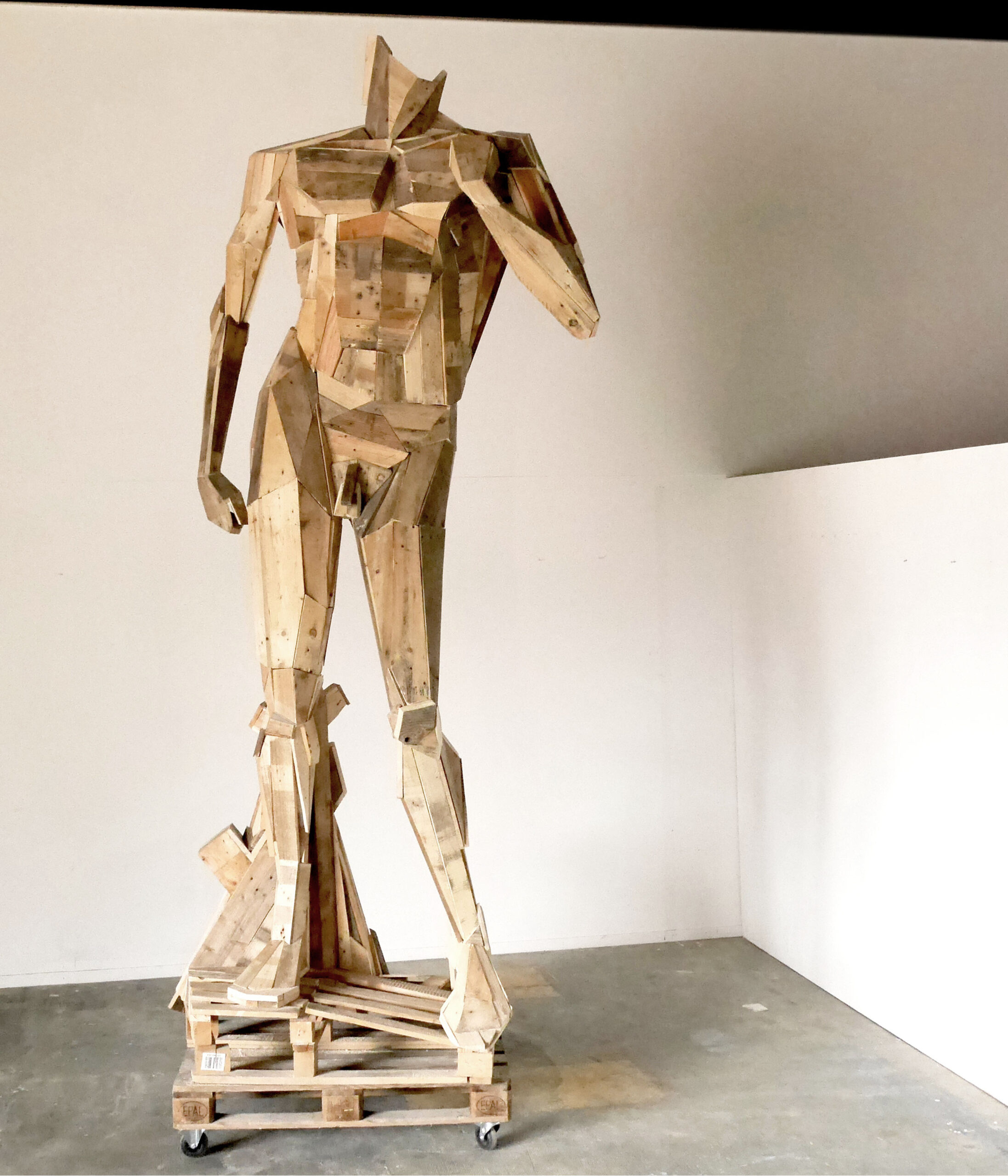
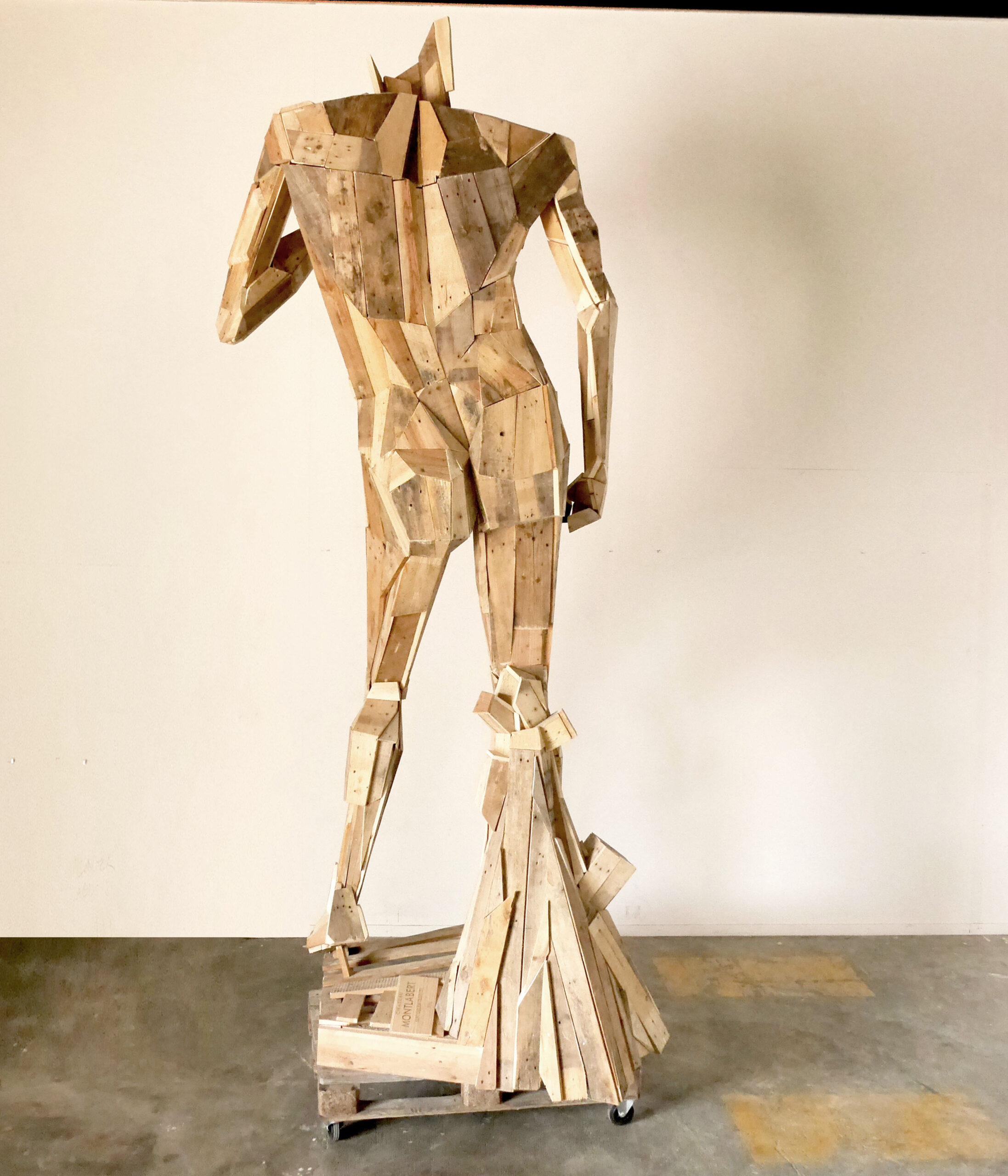
David
To develop my research in sculpture with pallet wood and continue my revisitation of classical statuary, one work stood out: at once a technical feat, the pose of an ideal and an emblematic figure in the representation of male beauty, Michelangelo's David was an obvious choice.
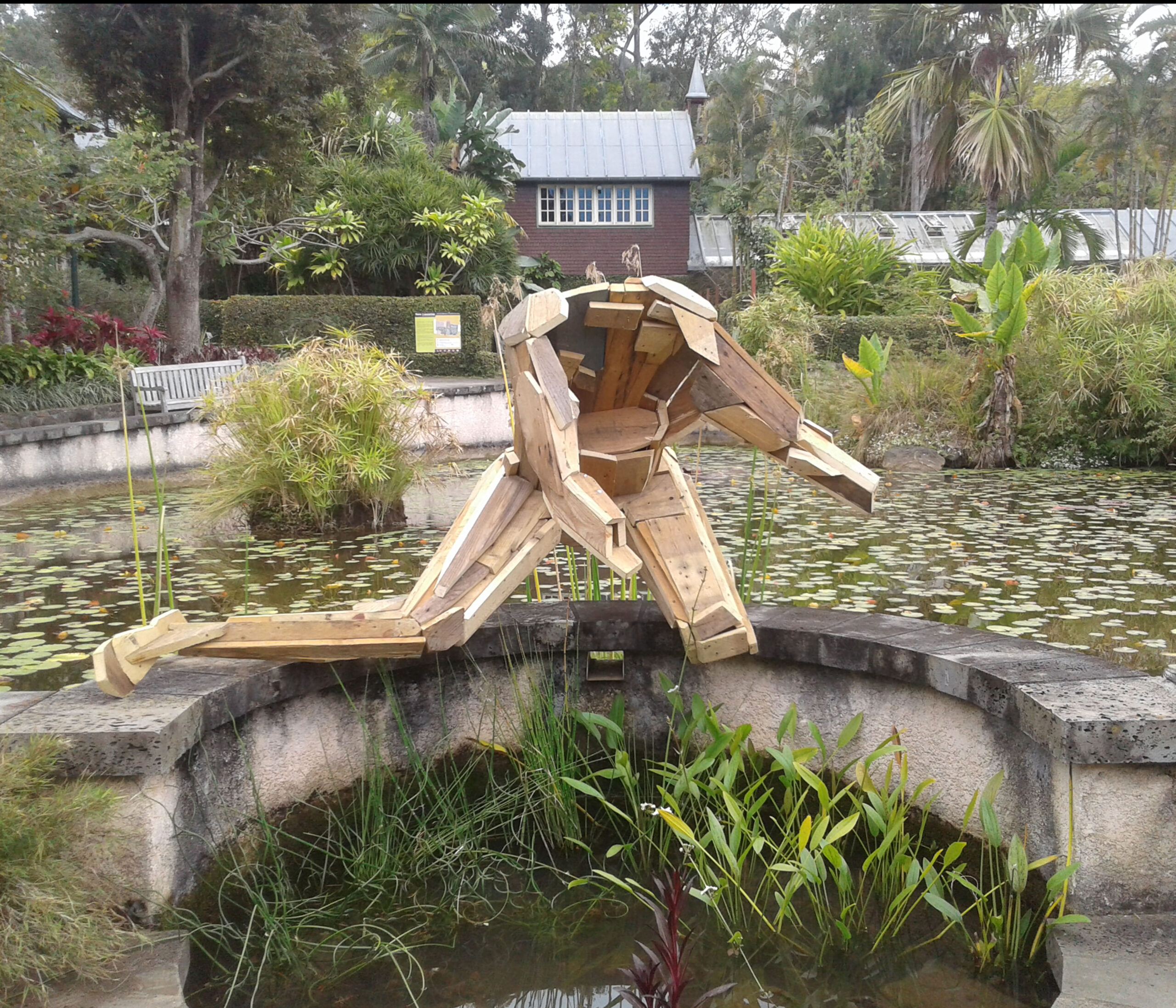
L'amour d'après, d'après
This piece was inspired by Antonio Canova's Psyche revived by Love's kisses. The delicacy of this work inspired me to reinterpret it: I wanted it to be about two men.
Working with wood, this wood, involves my own body, aching every evening, on the verge of exhaustion. My hands burn and stiffen every morning. But the attraction is stronger and the energy makes a loop: what happens under my hands charges me, holds me: I make a body.
